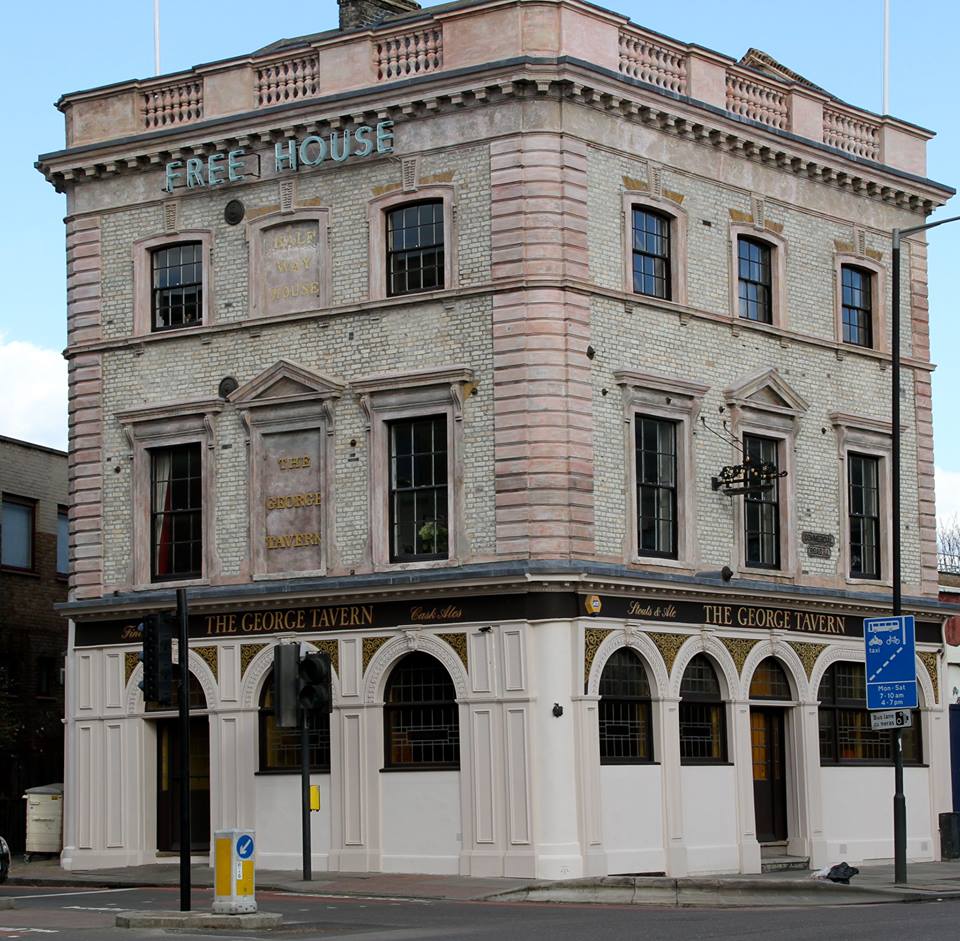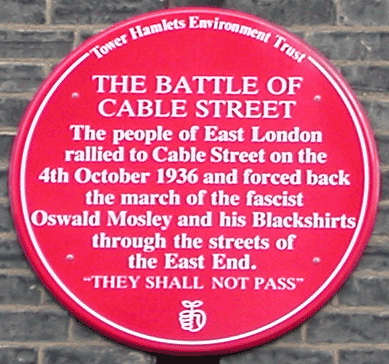|
Gardiner's (department Store)
Gardiner's was a department store at the junction of Whitechapel High Street and Commercial Road, London. Opened in the 1870s, it specialised in Scottish clothing and military uniforms. It was destroyed by fire in May 1972. Its site, where the main confrontation of the Battle of Cable Street took place in 1936, is sometimes still referred to as ''Gardiner's Corner''. See also * List of department stores of the United Kingdom This is a list of department stores of the United Kingdom. In the case of department store groups, the location of the flagship store is given. This list does not include large specialist stores, which sometimes resemble department stores. The li ... References {{Coord, 51, 30, 55.03, N, 0, 4, 16.44, W, scale:1563_region:GB, display=title Defunct department stores of the United Kingdom Whitechapel Shops in London ... [...More Info...] [...Related Items...] OR: [Wikipedia] [Google] [Baidu] |
Department Store
A department store is a retail establishment offering a wide range of consumer goods in different areas of the store, each area ("department") specializing in a product category. In modern major cities, the department store made a dramatic appearance in the middle of the 19th century, and permanently reshaped shopping habits, and the definition of service and luxury. Similar developments were under way in London (with Whiteleys), in Paris (Le Bon Marché) and in New York ( Stewart's). Today, departments often include the following: clothing, cosmetics, do it yourself, furniture, gardening, hardware, home appliances, houseware, paint, sporting goods, toiletries, and toys. Additionally, other lines of products such as food, books, jewellery, electronics, stationery, photographic equipment, baby products, and products for pets are sometimes included. Customers generally check out near the front of the store in discount department stores, while high-end traditional department sto ... [...More Info...] [...Related Items...] OR: [Wikipedia] [Google] [Baidu] |
Whitechapel High Street
Whitechapel High Street is a street in the Borough of Tower Hamlets in the East End of London. It is about 0.2 miles (350 m) long, making it “one of the shortest high streets in London”. It links Aldgate High Street to the south-west with Whitechapel Road to the north-east, and includes junctions with Commercial Street to the north and Commercial Road to the east. For motorists, it is the start of the A11 from London to Norwich. For cyclists, it is the start of Cycleway 2 from Aldgate to Stratford. For pedestrians, it is a route from Aldgate tube station to Brick Lane. “Whitechapel High Street provides a transition between the commercial development pressures from the City and the historic east end communities.” The street has many narrow plots with 3-5 storey buildings, rebuilt and enlarged at different times in different styles. It was designated a conservation area in 2007. In 2015 it was named by the Royal Society for Public Health as London's most unheal ... [...More Info...] [...Related Items...] OR: [Wikipedia] [Google] [Baidu] |
Commercial Road
Commercial Road is a street in the London Borough of Tower Hamlets in the East End of London. It is long, running from Gardiner's Corner (previously the site of Gardiners department store, and now Aldgate East Underground station), through Stepney to the junction with Burdett Road in Limehouse at which point the route splits into the East India Dock Road and the West India Dock Road. It is an artery connecting the historic City of London with the more recently developed financial district at Canary Wharf, and part of the A13. The road contains several listed buildings. These include the George Tavern, the Troxy cinema, the Limehouse Town Hall, the former Caird and Rayner Ltd works and the Albert Gardens estate. Route Commercial Road starts at a junction with Whitechapel High Street (the A11 close to Aldgate East tube station. It heads east, crossing the Limehouse Basin, the Regents Canal and the Limehouse Cut. At Burdett Road, the road forks in two, with East India Dock ... [...More Info...] [...Related Items...] OR: [Wikipedia] [Google] [Baidu] |
London
London is the capital and largest city of England and the United Kingdom, with a population of just under 9 million. It stands on the River Thames in south-east England at the head of a estuary down to the North Sea, and has been a major settlement for two millennia. The City of London, its ancient core and financial centre, was founded by the Romans as '' Londinium'' and retains its medieval boundaries.See also: Independent city § National capitals The City of Westminster, to the west of the City of London, has for centuries hosted the national government and parliament. Since the 19th century, the name "London" has also referred to the metropolis around this core, historically split between the counties of Middlesex, Essex, Surrey, Kent, and Hertfordshire, which largely comprises Greater London, governed by the Greater London Authority.The Greater London Authority consists of the Mayor of London and the London Assembly. The London Mayor is distinguished fr ... [...More Info...] [...Related Items...] OR: [Wikipedia] [Google] [Baidu] |
Battle Of Cable Street
The Battle of Cable Street was a series of clashes that took place at several locations in the inner East End, most notably Cable Street, on Sunday 4 October 1936. It was a clash between the Metropolitan Police, sent to protect a march by members of the British Union of Fascists led by Oswald Mosley, and various ''de jure'' and ''de facto'' anti-fascist demonstrators, including local trade unionists, communists, anarchists, British Jews and socialist groups. The anti-fascist counter-demonstration included both organised and unaffiliated participants. Background The British Union of Fascists (BUF) had advertised a march to take place on Sunday 4 October 1936, the fourth anniversary of their organisation. Thousands of BUF followers, dressed in their Blackshirt uniform, intended to march through the heart of the East End (an area which then had a large Jewish population). The BUF would march from Tower Hill and divide into four columns, each heading for one of four open air ... [...More Info...] [...Related Items...] OR: [Wikipedia] [Google] [Baidu] |
List Of Department Stores Of The United Kingdom
This is a list of department stores of the United Kingdom. In the case of department store groups, the location of the flagship store is given. This list does not include large specialist stores, which sometimes resemble department stores. The list is broken into "currently trading" (A–Z); "defunct groups" and "defunct" (A–Z). Currently trading A–F G–O P–Z Defunct department store groups Defunct department stores A * Adderlys ( Leicester) – based in Market Square; bought by Marshall & Snelgrove 1920s; renamed as Marshall & Snelgrove in 1947. * Adnitt Brothers ( Northampton) – established 1871 in the Drapery; bought by Debenhams in 1952; building rebuilt 1958–62; renamed Debenhams in 1973. * Affleck & Brown (Manchester) – bought by Debenhams in the 1950s. * W J Aldiss (Fakenham) – established 1892; department store closed in 2008; W J Aldiss continue to operate home furnishing stores in Fakenham and Norwich * J & R Allan (Edinburgh) – bough ... [...More Info...] [...Related Items...] OR: [Wikipedia] [Google] [Baidu] |
Defunct Department Stores Of The United Kingdom
{{Disambiguation ...
Defunct (no longer in use or active) may refer to: * ''Defunct'' (video game), 2014 * Zombie process or defunct process, in Unix-like operating systems See also * * :Former entities * End-of-life product * Obsolescence Obsolescence is the state of being which occurs when an object, service, or practice is no longer maintained or required even though it may still be in good working order. It usually happens when something that is more efficient or less risky r ... [...More Info...] [...Related Items...] OR: [Wikipedia] [Google] [Baidu] |
Whitechapel
Whitechapel is a district in East London and the future administrative centre of the London Borough of Tower Hamlets. It is a part of the East End of London, east of Charing Cross. Part of the historic county of Middlesex, the area formed a civil and ecclesiastical parish after splitting from the ancient parish of Stepney in the 14th century. It became part of the County of London in 1889 and Greater London in 1965. Because the area is close to the London Docklands and east of the City of London, it has been a popular place for immigrants and the working class. The area was the centre of the London Jewish community in the 19th and early 20th centuries. Whitechapel, along with the neighbouring district of Spitalfields, were the location of the infamous 11 Whitechapel murders (1888–91), some of which were attributed to the mysterious serial killer known as Jack the Ripper. In the latter half of the 20th century, Whitechapel became a significant settlement for the British ... [...More Info...] [...Related Items...] OR: [Wikipedia] [Google] [Baidu] |
.jpg)


